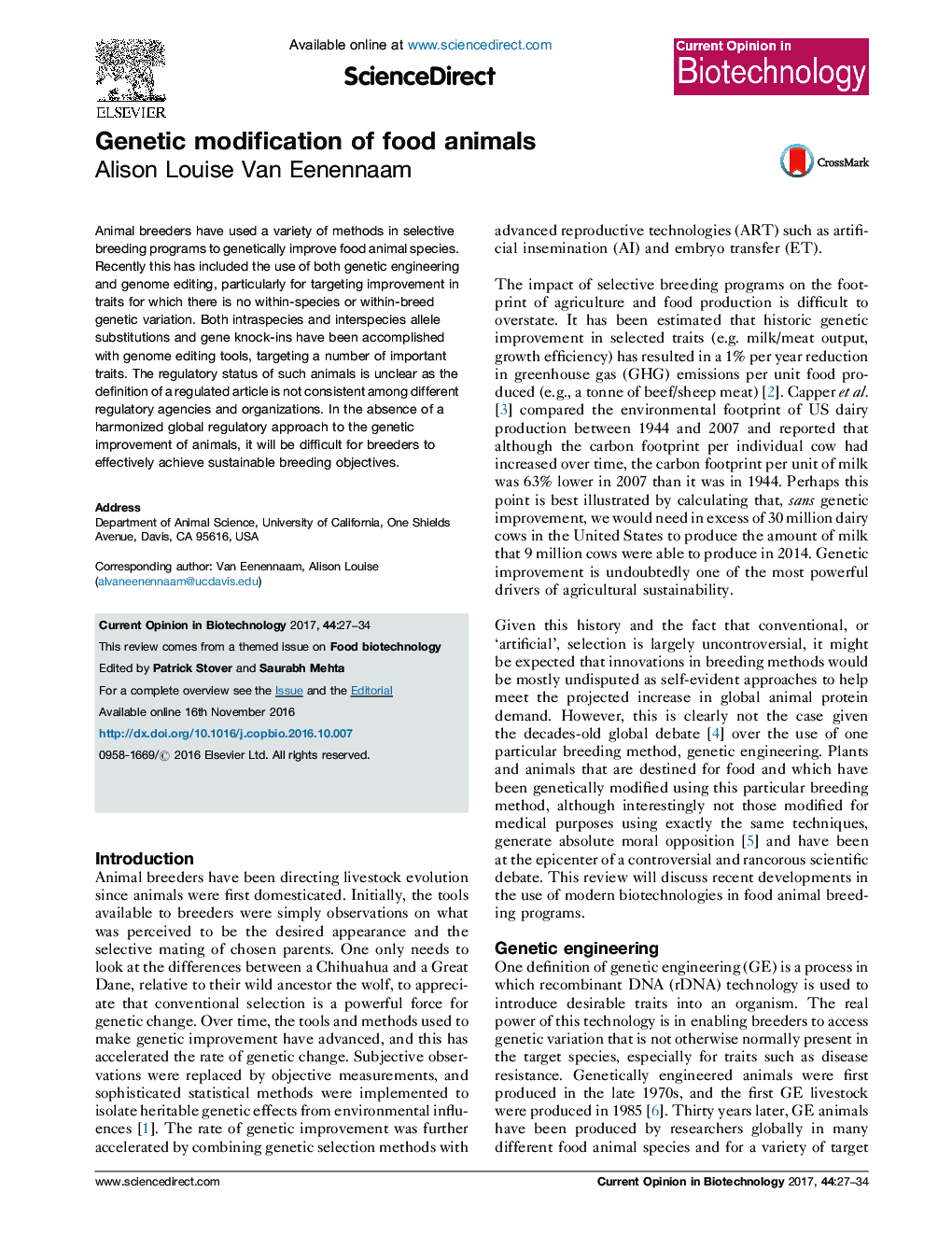| Article ID | Journal | Published Year | Pages | File Type |
|---|---|---|---|---|
| 6451530 | Current Opinion in Biotechnology | 2017 | 8 Pages |
•Genetic improvement decreases the environmental footprint of animal-source protein.•New breeding methods enable precise intraspecies and interspecies allele substitutions.•Disease resistance and welfare traits have been targeted for genetic improvement.•The regulatory status of animals produced using gene editing techniques is unclear.
Animal breeders have used a variety of methods in selective breeding programs to genetically improve food animal species. Recently this has included the use of both genetic engineering and genome editing, particularly for targeting improvement in traits for which there is no within-species or within-breed genetic variation. Both intraspecies and interspecies allele substitutions and gene knock-ins have been accomplished with genome editing tools, targeting a number of important traits. The regulatory status of such animals is unclear as the definition of a regulated article is not consistent among different regulatory agencies and organizations. In the absence of a harmonized global regulatory approach to the genetic improvement of animals, it will be difficult for breeders to effectively achieve sustainable breeding objectives.
Graphical abstractFigure optionsDownload full-size imageDownload high-quality image (331 K)Download as PowerPoint slide
